TCM Diagnosis – Pulse Diagnosis
Everyone is familiar with pulse taking. Whenever we visit a TCM doctor, they will check our pulse and can understand our health condition through it. Many people are curious about how TCM can determine our physical state just by feeling the pulse. Today, let’s learn about what pulse diagnosis in TCM is.

Pulse diagnosis is a diagnostic method that involves feeling the pulse at different parts of the body to observe changes in pulse patterns. It is also known as pulse taking, pulse diagnosis, and pulse pressing.
Pulse diagnosis is one of the four diagnostic methods in TCM (observation, listening, inquiry, and palpation), belonging to palpation, and is an essential objective basis for syndrome differentiation and treatment. Palpation is a diagnostic method gradually formed by the Chinese people in their long-term struggle against diseases. Although it is the last of the four diagnostic methods, it is the most characteristic of TCM, being the only important diagnostic method that directly touches the patient’s body. Its long history, rich content, and extensive literature make it incomparable to the other three diagnostic methods.
In clinical practice, pulse diagnosis can infer the progression and prognosis of diseases. Clinically, it is essential to master the timing of pulse diagnosis, the patient’s position, the doctor’s finger technique and pressure, and the duration of each pulse check, ensuring that each side’s pulse beats at least 50 times. Additionally, understanding the variations in the pulse of healthy individuals is crucial for accurate pulse diagnosis.

Pulse diagnosis is a method where the doctor uses fingers to press on the patient’s arteries, understanding health or illness by observing the characteristics of the pulse to differentiate diseases.
Pulse diagnosis relies on the sensitive touch of the fingers for experience and recognition. Therefore, learning pulse diagnosis requires familiarity with the basic knowledge of pulse theory and mastery of the basic skills of pulse taking, with repeated practice and careful observation to gradually recognize various pulse patterns and effectively apply them in clinical practice.
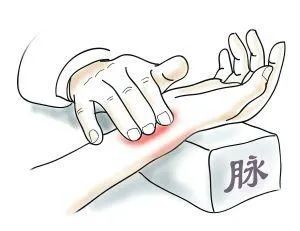
Let’s review what we have learned previously:
Taking the Cun Kou pulse diagnosis method is the primary method of pulse diagnosis in TCM today.
During pulse diagnosis, the left hand examines the pulse of the right hand, and the right hand examines the pulse of the left hand. The key points of pulse taking can be summarized as: three fingers aligned, middle finger positioned at the Guan, fingers pressing on the pulse ridge, and finger placement being appropriately spaced.
Characteristics of Normal Pulse (Ping Mai):
1. Four to five beats per breath;
2. Not floating or sinking, not large or small, calm and gentle, smooth and strong;
3. All three positions (Cun, Guan, Chi) can be felt, with a continuous pulse when pressed;
The characteristics of a normal pulse include having vitality, strength, and depth, but normal pulses can also be affected by age, gender, body type, lifestyle, emotional state, seasonal climate, time of day, and geographical environment, leading to physiological variations.
As long as there is vitality, strength, and depth, these physiological variations in the pulse still belong to the category of normal pulses and should be differentiated from pathological pulses in clinical practice.

Modern clinical references mention 28 types of pulse patterns, and this course will only discuss 19 common types of pulse patterns, which we have learned according to four elements: position, rate, shape, and force:
Classified by pulse position: floating pulse and sinking pulse; classified by pulse rate: slow pulse and rapid pulse; classified by pulse width: flooding pulse and thin pulse; classified by pulse length: long pulse and short pulse; classified by pulse strength: weak pulse and strong pulse; classified by smoothness: slippery pulse and rough pulse; classified by evenness: knotted pulse, intermittent pulse, and rapid pulse; classified by tension: wiry pulse, soft pulse, tight pulse, and relaxed pulse, totaling nineteen types of pulse characteristics and clinical significance.
Due to the numerous pulse patterns, many of which are very similar, making them difficult to master and remember, we have categorized and summarized the twenty-eight pulses, and we have also learned about analogous pulses, combined pulses, and true organ pulses. This can help simplify and clarify the learning process.
Today we will learn about examining women’s and children’s pulses:

Section Six: Examining Women’s and Children’s Pulses
1. Examining Women’s Pulses
Women have special physiological activities such as menstruation, pregnancy, and childbirth, and their related diseases, thus examining women’s pulses has certain particularities.
First, let’s look at examining the menstrual pulse. A woman’s menstrual cycle is usually closely related to the fullness of liver blood and kidney essence, which are primarily distributed in the Guan and Chi positions of the left hand. Therefore, when a woman’s left Guan and left Chi pulses are significantly more vigorous than those of the right hand, and she does not experience bitterness in her mouth, fever, or abdominal distension, this indicates that menstruation is approaching.
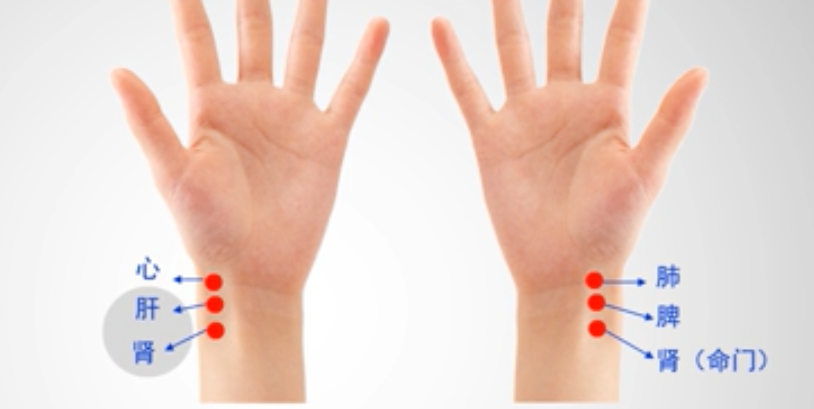
(1) Examining the Menstrual Pulse
1. Menstruation: A woman’s left Guan and Chi pulses suddenly become more vigorous than the right hand, with no bitterness in the mouth, no fever, and no abdominal distension, indicates that menstruation is approaching. If the Cun pulse is harmonious but the Chi pulse is weak or thin and rough, it indicates excessive menstrual flow.
2. Amenorrhea:
If a woman has amenorrhea, a weak, thin, and rough Chi pulse often indicates a deficiency of essence and blood;
If the Chi pulse is wiry and rough, it often indicates qi stagnation and blood stasis;
If the pulse is slippery and smooth, it often indicates phlegm-dampness obstructing the uterus.

(2) Examining the Pregnancy Pulse
1. If a married woman who usually has normal menstruation suddenly experiences amenorrhea, and the pulse is slippery and rapid (Xi Mai), along with symptoms of food cravings, this indicates pregnancy. The characteristics of the pregnancy pulse are that the Shaoyin pulse (Shenmen and Chi positions) becomes stronger, indicating blood gathering to nourish the fetus and the fetal energy stimulating the kidney energy.
It is important to note that the Chi pulse reflects the kidneys, and the uterus is related to the kidneys. After pregnancy, the fetal energy stimulates the Chi pulse, making the two Chi pulses slippery and rapid, significantly stronger than the Cun pulse, which is the manifestation of the pregnancy pulse.
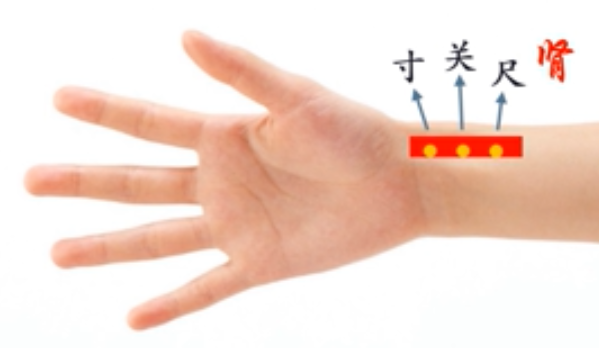
2. If after conception, due to maternal qi and blood deficiency or instability of the fetal source, or in the case of a postpartum woman, the pulse may be thin and soft or not smooth, this should be taken seriously.
3. If a pregnant woman’s pulse is sinking and rough, it often indicates insufficient essence and blood, affecting the fetal source; a rough and weak pulse indicates deficiency of yang qi, which may lead to fetal death or masses in the uterus.

(3) Examining the Labor Pulse
The pulse characteristics of a pregnant woman about to give birth have been interpreted differently by various medical practitioners throughout history:
The “Treatise on the Origins and Symptoms of Diseases” states: “When examining the Chi pulse of a pregnant woman, if it is rapid and turning like cutting a rope or turning a pearl, it indicates labor.”
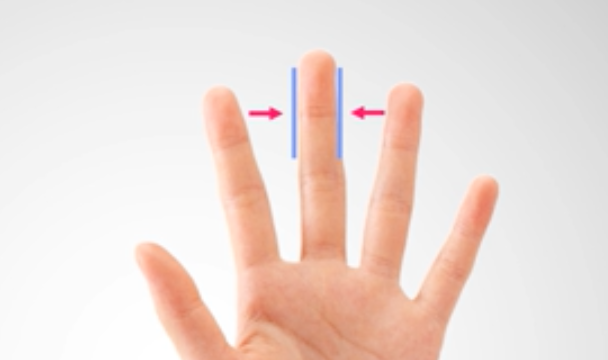
The “Medical Records” states: “If the pulse is felt at the sides of the two middle fingers, and there is no pulse during non-labor, it indicates that labor is not imminent. If the pulse beats strongly, with abdominal pain radiating to the waist, in a pattern of alternating tightness, it indicates that labor is imminent.” This significant pulsation at the middle finger artery is also referred to as Labor Pulse.
Next, let’s learn about examining children’s pulses:

2. Examining Children’s Pulses
We have already learned about the diagnostic method of children’s fingerprints in observation diagnosis, which mainly applies to infants under three years old. For children over three years old, pulse diagnosis is used.
Because the Cun Kou area in children is relatively short, it is difficult to use three fingers to divide into three positions, so the method of examining children’s pulses differs from that of adults, often using the one-finger method to assess three positions, abbreviated as one finger assessing three positions.
(1) Main Method for Examining Children’s Pulses: One Finger Assessing Three Positions
The method is: use the left hand to hold the child’s hand, for children under three years old, the right thumb can be pressed on the pulse at the back of the child’s hand without dividing into three positions, focusing on the pulse rate. It is also possible to use the index finger to press on the three positions or to roll the index finger across the pulse to assess it.
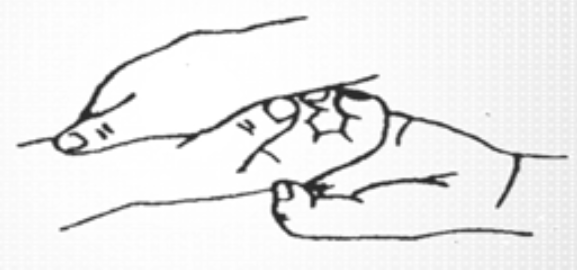
For children aged 3-5 years, the midline of the back of the hand is used as the position, and one finger is rolled to the sides to assess the three positions; for children aged 6-8 years, the thumb can be moved to assess the three positions; for children aged 9-10 years, the fingers can be sequentially placed to assess the Cun, Guan, and Chi positions; for children over 10 years old, the adult method of assessing the three positions can be used.
(2) Significance of Examining Children’s Pulses
Because children’s diseases are generally simpler, their pulse patterns are usually not as complex as those of adults.
Children’s pulse patterns are generally assessed for floating and sinking, slow and rapid, strong and weak, and relaxed and tense, to differentiate between yin and yang, exterior and interior, cold and heat, and the strength of pathogenic factors, without needing to detail the twenty-eight pulses.
For example, we use floating and sinking to differentiate exterior and interior, slow and rapid to differentiate cold and heat, strong and weak to differentiate deficiency and excess, and relaxed and tense to differentiate cold and dampness.

For children aged 2-3 years, a pulse rate of 6-7 beats per breath is considered normal; for children aged 5-10 years, a pulse rate of 6 beats is normal, while above 7 beats is considered rapid, and 4-5 beats is considered slow.
(3) Common Pediatric Pulse Patterns
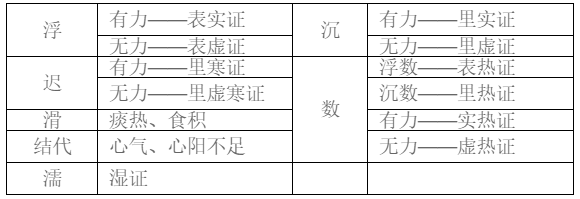
Due to the short length of the pulse area in children, the pulse may be affected by crying and restlessness, which can impact the authenticity of the pulse pattern. The skin at the fingerprint area is thin and tender, making the pulse vessels more exposed. Therefore, for children under three years old, it is often combined with fingerprint changes to assist in diagnosis.
The above is what we have learned about examining women’s and children’s pulses.
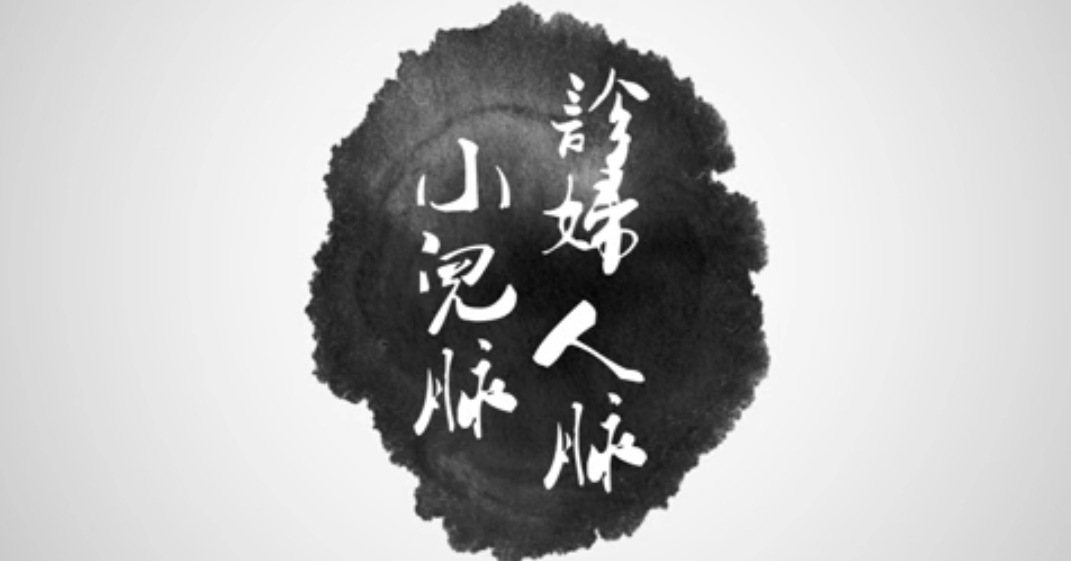

Long press to recognize the QR code and follow Xile Liangyao
Let’s discover the wonders of TCM together and make TCM closer to life.
文章好看就点这里

